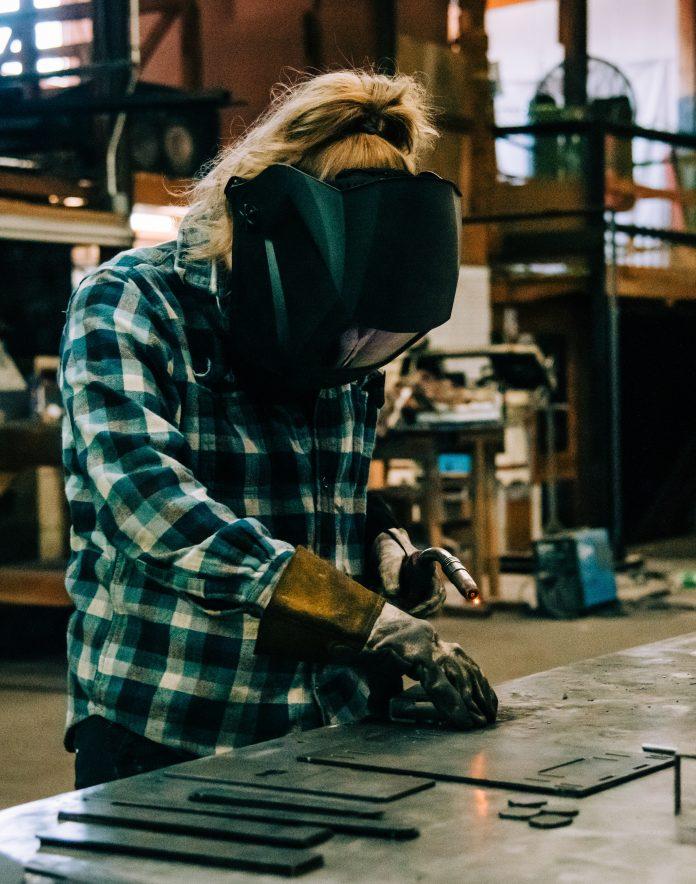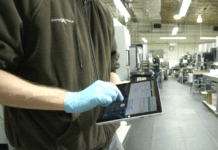The UK construction industry is bracing for a significant workforce shortfall. The latest Construction Skills Network (CSN) report forecasts that by 2027, an additional 225,000 workers will be needed to meet construction demands. Welding, a critical sector within construction, is not immune to this trend. Currently, the number of welders in the UK has decreased by a quarter in the past five years, and with half of the nation’s welders expected to retire by 2027, this creates a need for 36,000 new jobs.
The Current State of the Welding Workforce
Welding has traditionally been a male-dominated field. However, more women are entering the profession, finding rewarding careers despite comprising only 4% of applicants for welding jobs. This disparity partly stems from unequal pay conditions and societal perceptions of welding as a male-dominated profession. The underrepresentation of women in welding is a missed opportunity, considering the UK’s overall female workforce stands at 47%, but only 12% are in engineering roles, despite the country facing a shortfall of 59,000 engineers.
Advantages of Gender Diversity in Welding
Diverse workforces bring fresh perspectives and innovative solutions to industries. Women, in particular, bring several advantages to welding. Research indicates that women have greater hand stability than men, an essential skill in precision welding. Additionally, women’s lower center of gravity aids in maintaining balance and posture in demanding welding positions. Women also tend to take better care of their health and adhere more strictly to safety protocols, leading to fewer injuries and respiratory issues in welding environments.
Challenges and Opportunities
Attracting more women to welding requires overcoming societal stereotypes and providing equal opportunities and pay. The negative perception of welding as a tough, dirty, or dangerous job needs to be addressed. In reality, welding can be a creative and safe profession, thanks to technological advancements and stringent health and safety regulations.
Educational initiatives like the London Welding Academy, launched by the College of Haringey, Enfield, and North East London (CONEL) and Ardmore, aim to provide skilled workers for the industry. Their Welding Level 3 Apprenticeship program guarantees jobs upon successful completion, addressing both the skills gap and providing economic opportunities.
Strategies for Enhancing Gender Inclusivity in Welding
Educational Outreach and Changing Perceptions
To attract a more diverse range of candidates to welding, it is crucial to start at the educational level. Programs like Tomorrows Engineers Week, supported by The Welding Institute, showcase the opportunities in engineering to young people, particularly highlighting the role of welding in various industries. Such initiatives aim to dismantle the stereotype of welding as a male-only profession and inspire more young women to consider careers in this field.
Role of Apprenticeships in Bridging the Gender Gap
Apprenticeship programs are vital in equipping potential welders with the necessary skills. The London Welding Academy’s approach, offering an accelerated 18-month training resulting in guaranteed job placements, is a model that could be replicated. By focusing on hands-on training and immediate employment opportunities, these programs can be particularly appealing to women seeking stable and rewarding careers.
Addressing Workplace Culture and Pay Disparity
Creating a welcoming and inclusive workplace culture is essential. Efforts must be made to tackle discrimination and harassment, as these are significant barriers to attracting and retaining women in the welding profession. Additionally, addressing the pay gap between genders is crucial. Although recent years have seen a narrowing of this gap, continuous efforts are needed to ensure equitable pay for women in the trade.
Health and Safety: A Priority for All
Welding has undergone significant advancements in health and safety. Employers are now more aware of the risks associated with welding and are required to adhere to strict health and safety regulations. This includes ensuring proper ventilation to mitigate fume hazards, providing adequate personal protective equipment, and ensuring safe working environments. Emphasizing these safety measures can help change the perception of welding as a dangerous job and attract more candidates, especially women.
Towards a More Inclusive Future
The welding sector, like many others within the construction industry, stands at a crossroads. With the impending skills shortage, the need to attract and retain a diverse workforce, including women, has never been more critical. By addressing educational, cultural, and safety concerns, the industry can not only meet its immediate workforce needs but also pave the way for a more inclusive and innovative future.
Efforts like the London Welding Academy and Tomorrow’s Engineers Week, combined with a concerted push towards gender parity in pay and workplace culture, are key steps towards this goal. As the industry evolves, embracing gender inclusivity in welding will not only help bridge the skills gap but also enrich the profession with diverse perspectives and skills.
By: Guillaume Roeckel, Global Machines Sales Director at Welding Alloys
Source Reference List
- Construction Skills Network (CSN) Report – 2023-2027. “CSN Industry Outlook – 2023-2027.” CITB. Accessed 2023.
- “New London Welding Academy will provide a skilled workforce to help build back the capital’s economy.” FE News. Accessed 2023.
- “Tomorrow’s Engineering Week.” The Welding Institute. Accessed 2023.
- “Health and safety in welding.” TWI. Accessed 2023.
- “Weld Like a Girl! Welding is not just a man’s career!” Free2Learn. Accessed 2023.
- Roeckel, Guillaume, Global Machines Sales Director. “Laser PTA.” Welding Alloys. Accessed 2023. [https://www.welding-alloys.com/services/engineered-wear-services/application-methods/laser-pta/]






















